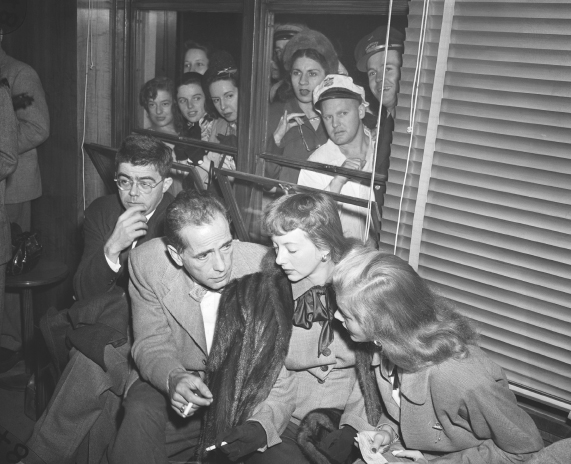Expression in the Media: Print, Broadcast, and Online
“It is the right of the viewers and listeners, not the right of the broadcasters, which is paramount.”
SUPREME COURT DECISION IN RED LION BROADCASTING CO. V. FCC, 395 U.S. 367, JUNE 9, 1969
“A responsible press is an undoubtedly desirable goal, but press responsibility is not mandated by the Constitution and like many other virtues it cannot be legislated.”
SUPREME COURT DECISION IN MIAMI HERALD PUBLISHING CO. V. TORNILLO, 418 U.S. 241, JUNE 25, 1974
During the Cold War, a vigorous campaign led by Joseph McCarthy, an ultraconservative senator from Wisconsin, tried to rid both government and the media of so-called communist subversives who were allegedly challenging the American way of life. In 1950, a publication called Red Channels: The Report of Communist Influence in Radio and Television aimed “to show how the Communists have been able to carry out their plan of infiltration of the radio and television industry.” Red Channels, inspired by McCarthy and produced by a group of former FBI agents, named 151 performers, writers, and musicians who were “sympathetic” to communist or left-wing causes. Among those named were Leonard Bernstein, Will Geer, Dashiell Hammett, Lillian Hellman, Lena Horne, Burgess Meredith, Arthur Miller, Dorothy Parker, Pete Seeger, Irwin Shaw, and Orson Welles. For a time, all were banned from working in television and radio even though no one on the list was ever charged with a crime.17
Although the First Amendment protects an individual’s right to hold controversial political views, network executives either sympathized with the anticommunist movement or feared losing ad revenue. At any rate, the networks did not stand up to the communist witch-hunters. In order to work, a blacklisted or “suspected” performer required the support of the program’s sponsor. Though I Love Lucy’s Lucille Ball, who in sympathy with her father once registered to vote as a communist in the 1930s, retained Philip Morris’s sponsorship of her popular program, other performers were not as fortunate. Although no evidence was ever introduced to show how entertainment programs circulated communist propaganda, by the early 1950s the TV networks were asking actors and other workers to sign loyalty oaths denouncing communism—a low point for the First Amendment.

THE HOUSE UN-AMERICAN ACTIVITIES COMMITTEE attempted to expose performers, writers, and musicians as “communist subversives,” blacklisting them from working in Hollywood without any evidence of criminal wrongdoing. In 1947, movie stars like Humphrey Bogart, Evelyn Keyes, and Lauren Bacall, pictured here, visited Washington to protest the committee’s methods.
The communist witch-hunts demonstrated key differences between print and broadcast protection under the First Amendment. On the one hand, licenses for printers and publishers have been outlawed since the eighteenth century. On the other hand, in the late 1920s commercial broadcasters themselves asked the federal government to step in and regulate the airwaves. At that time, they wanted the government to clear up technical problems, channel noise, noncommercial competition, and amateur interference. Ever since, most broadcasters have been trying to free themselves from the government intrusion they once demanded.